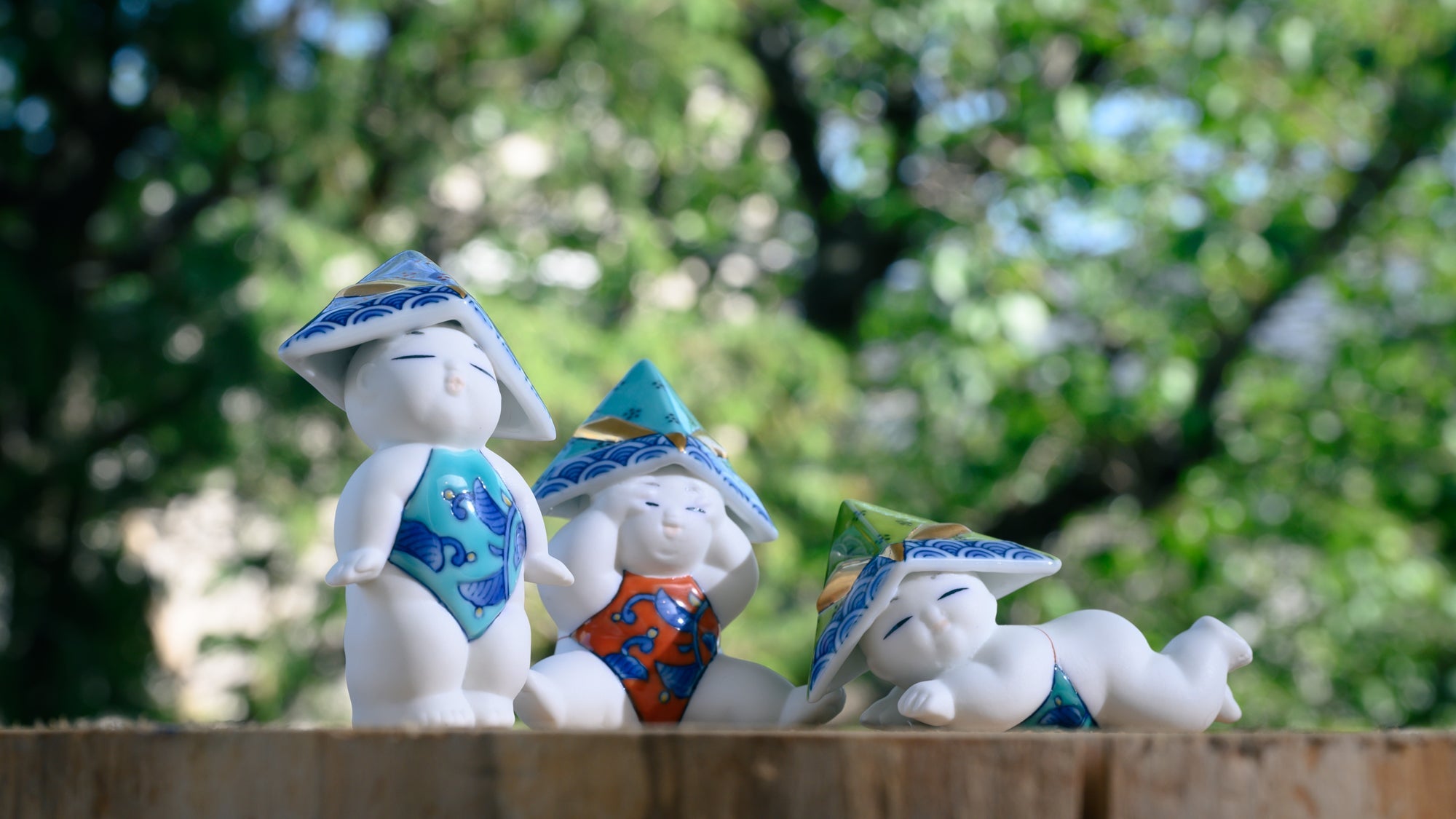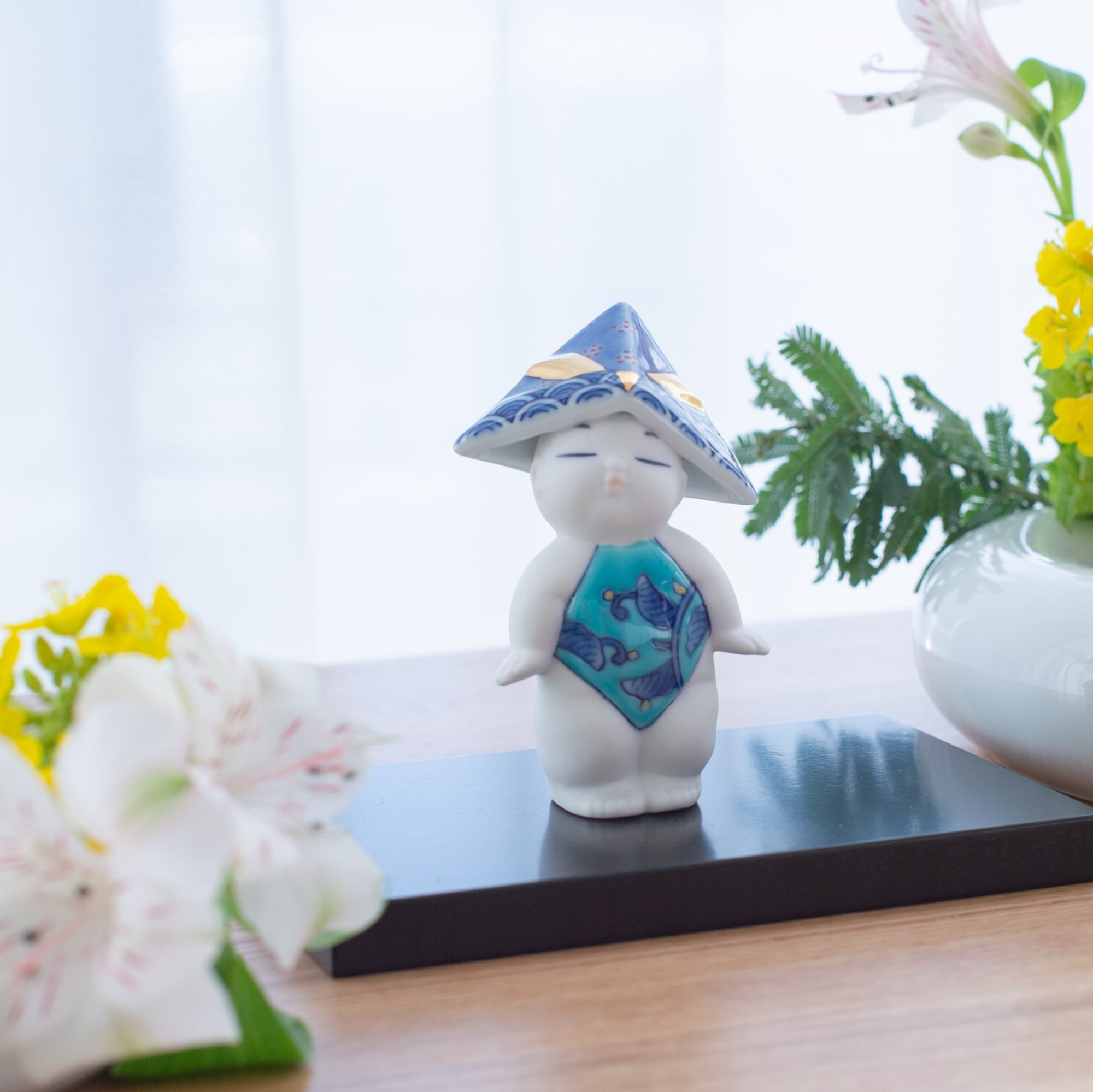
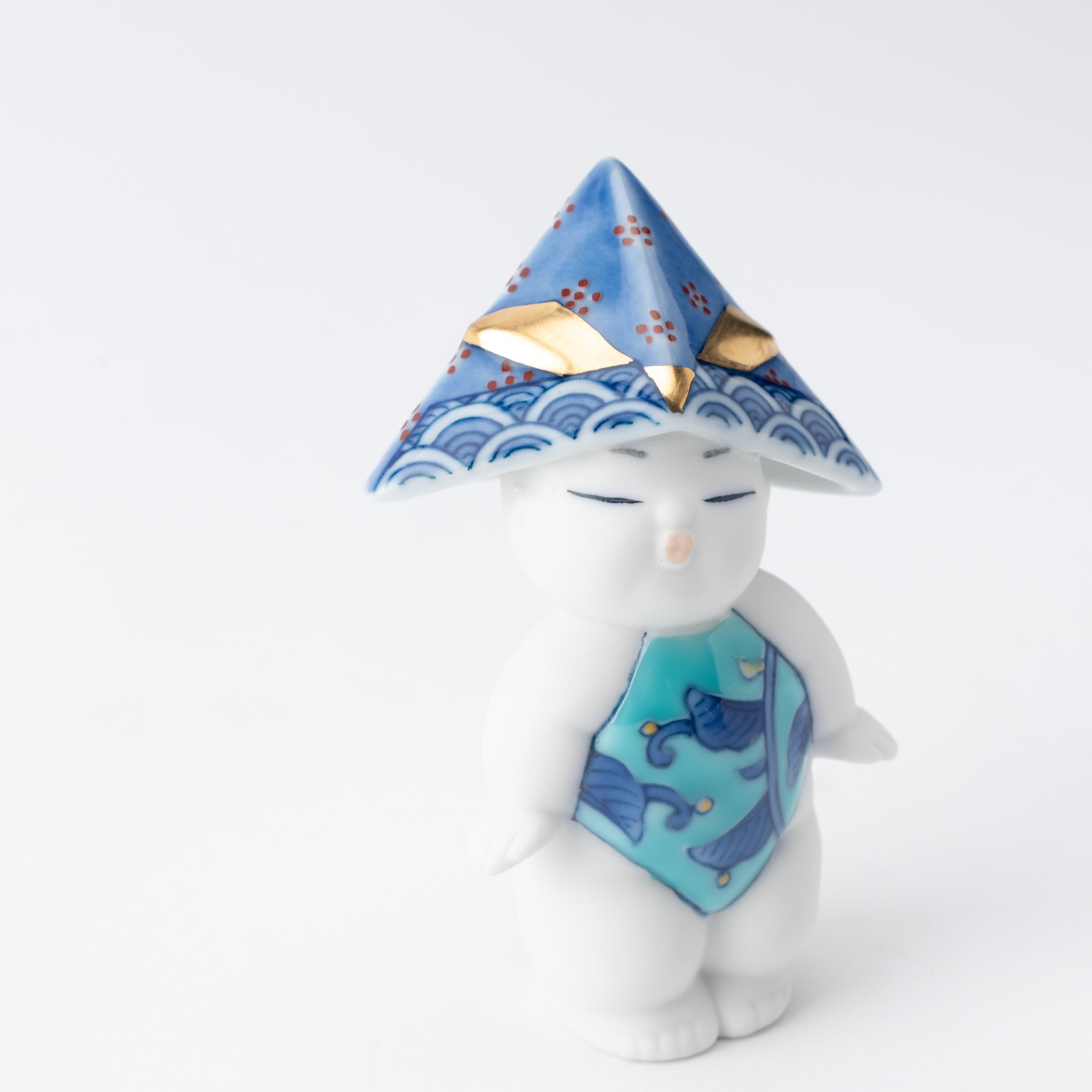
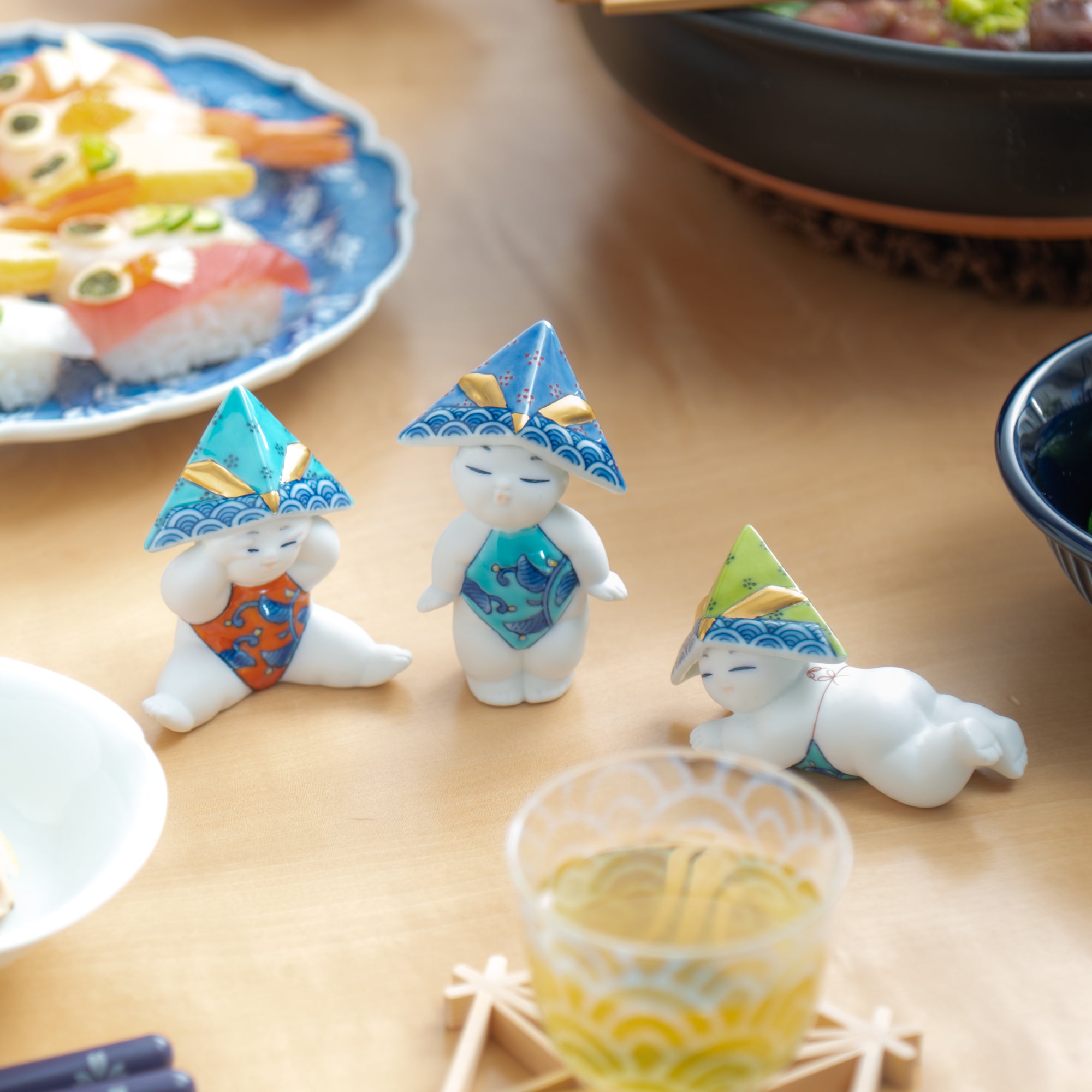
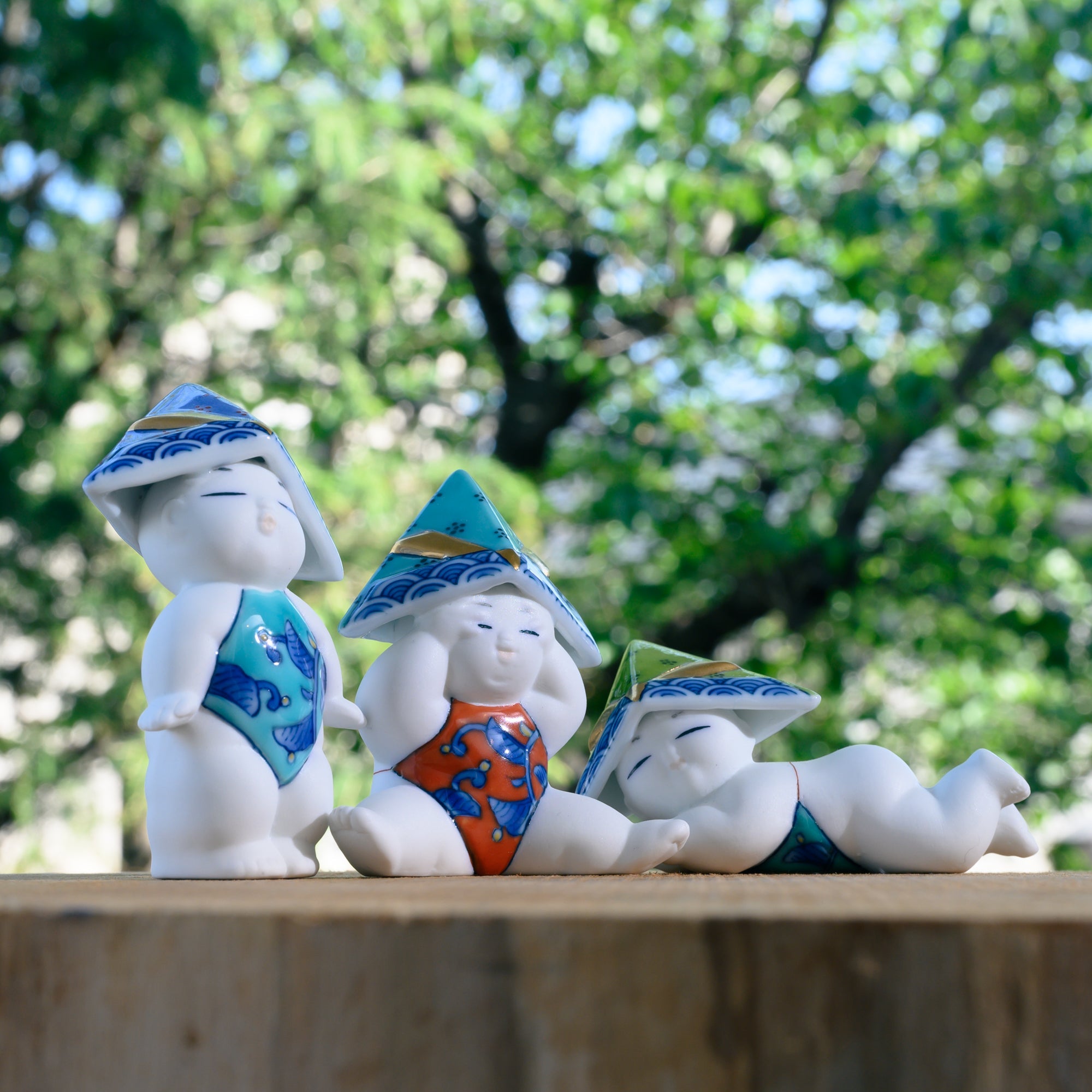

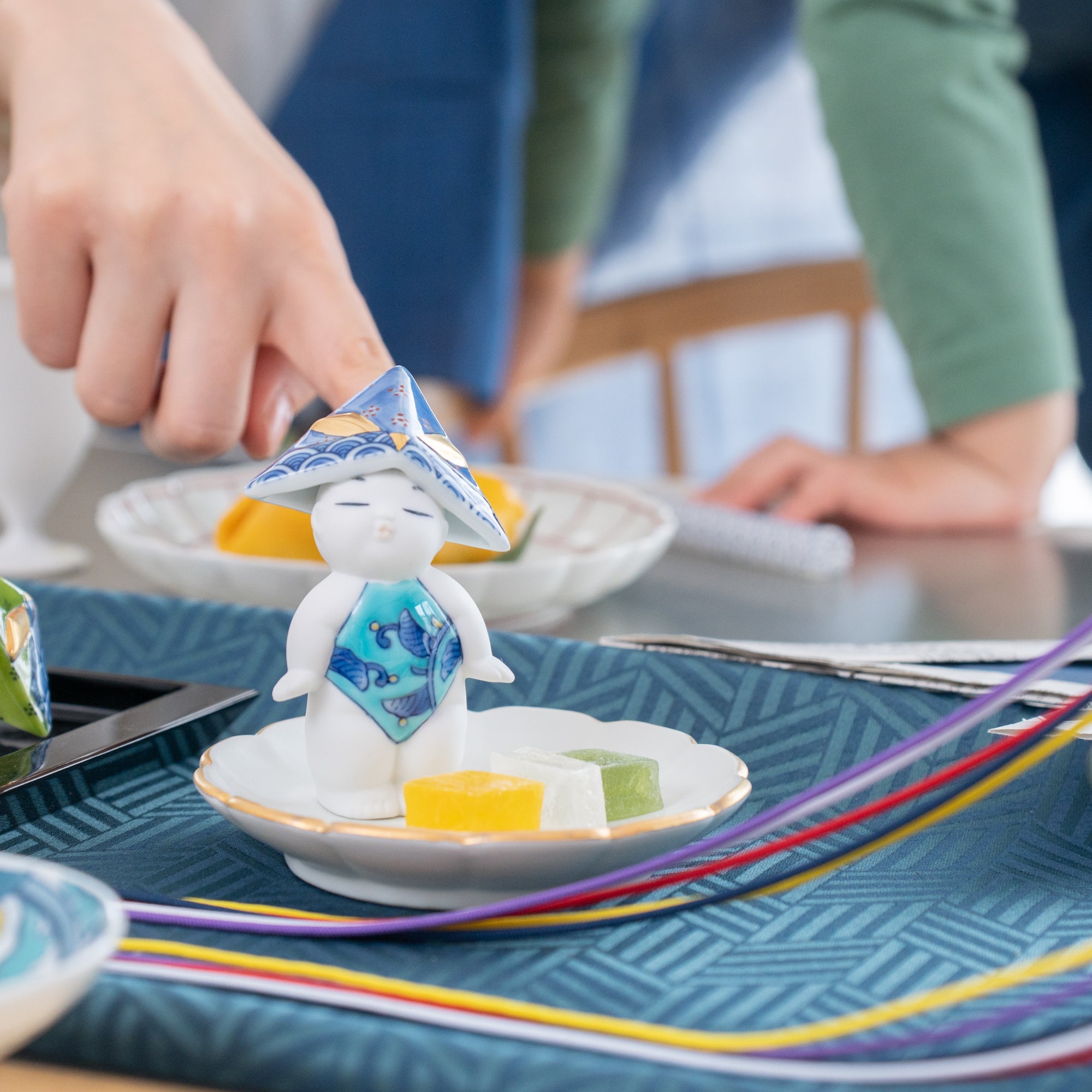
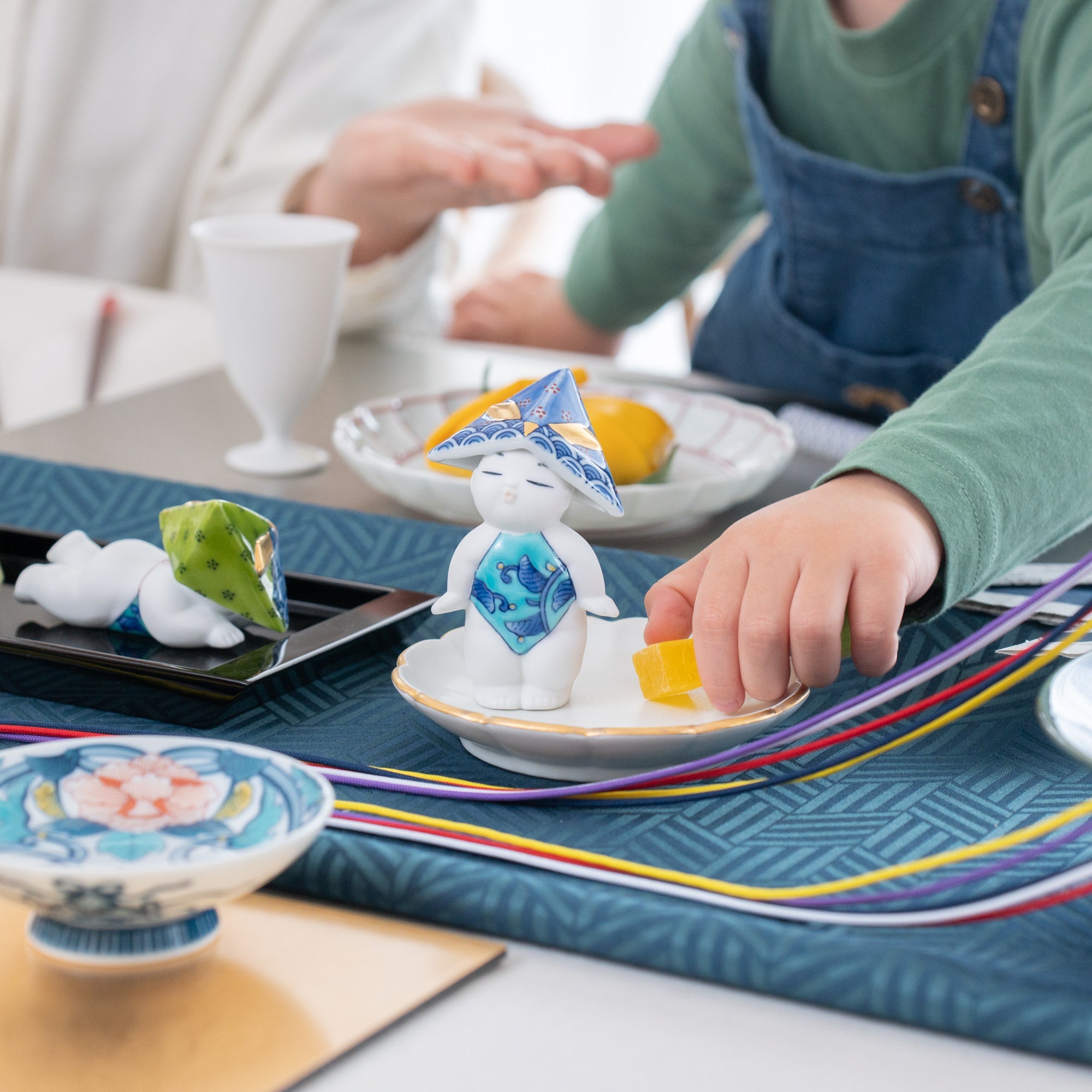
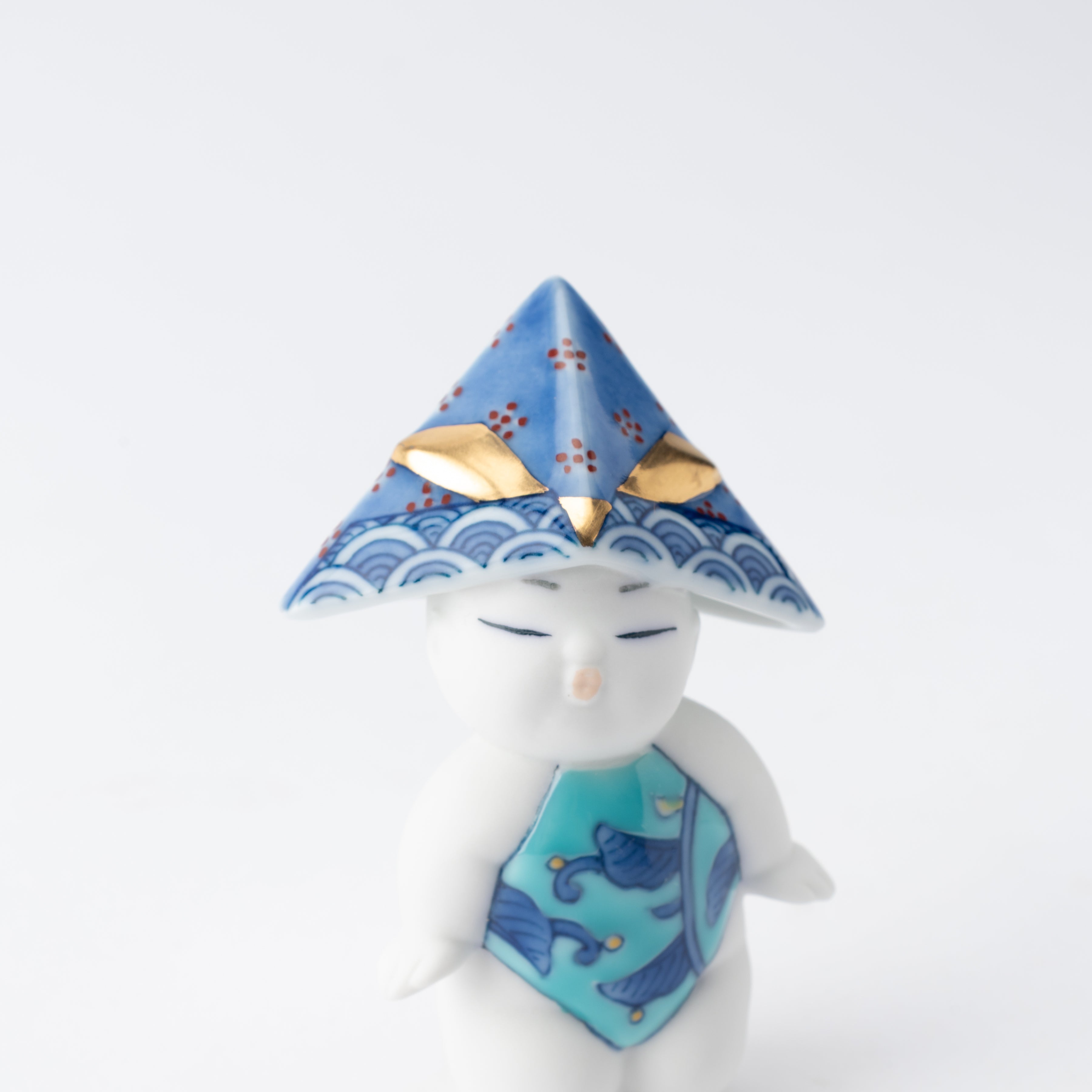
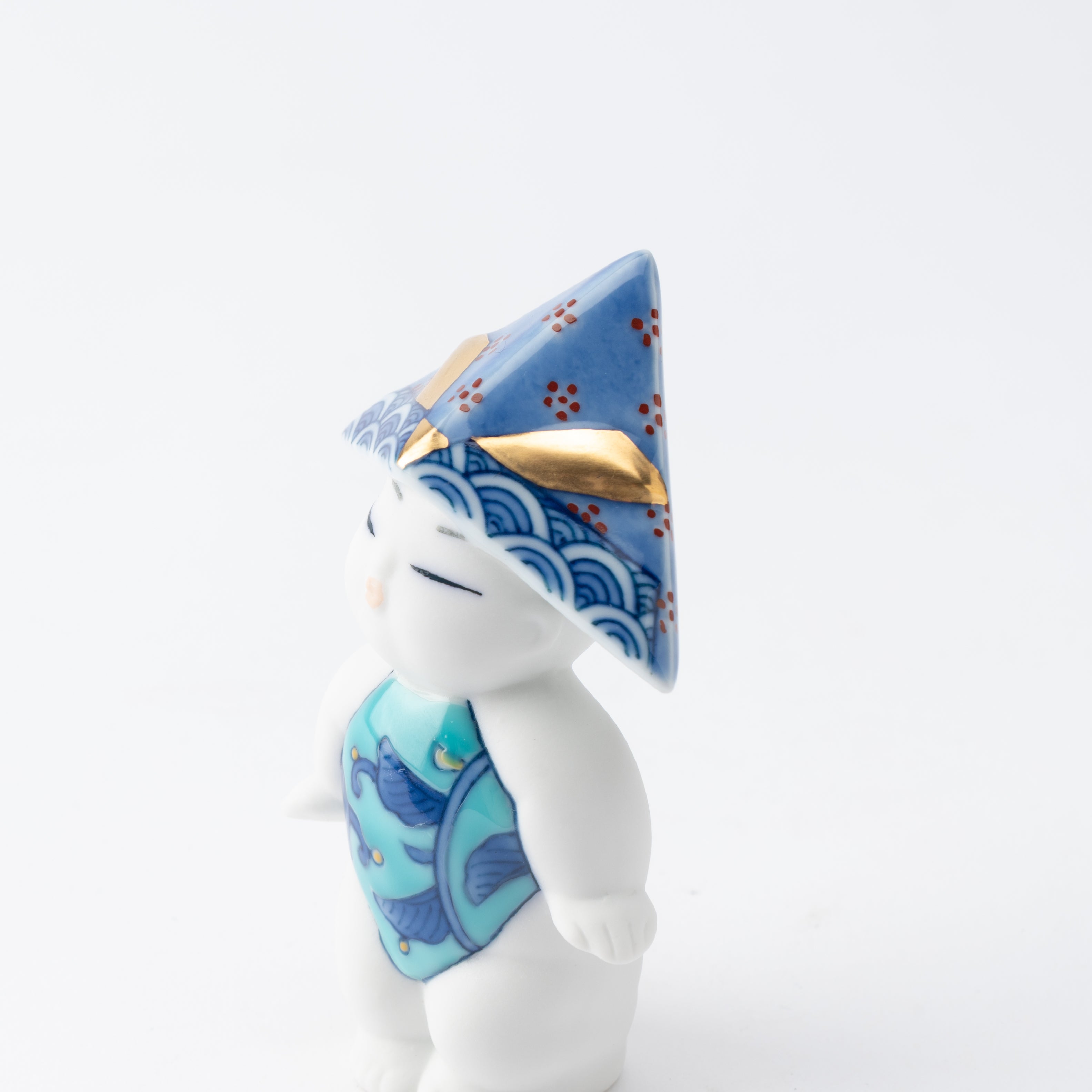
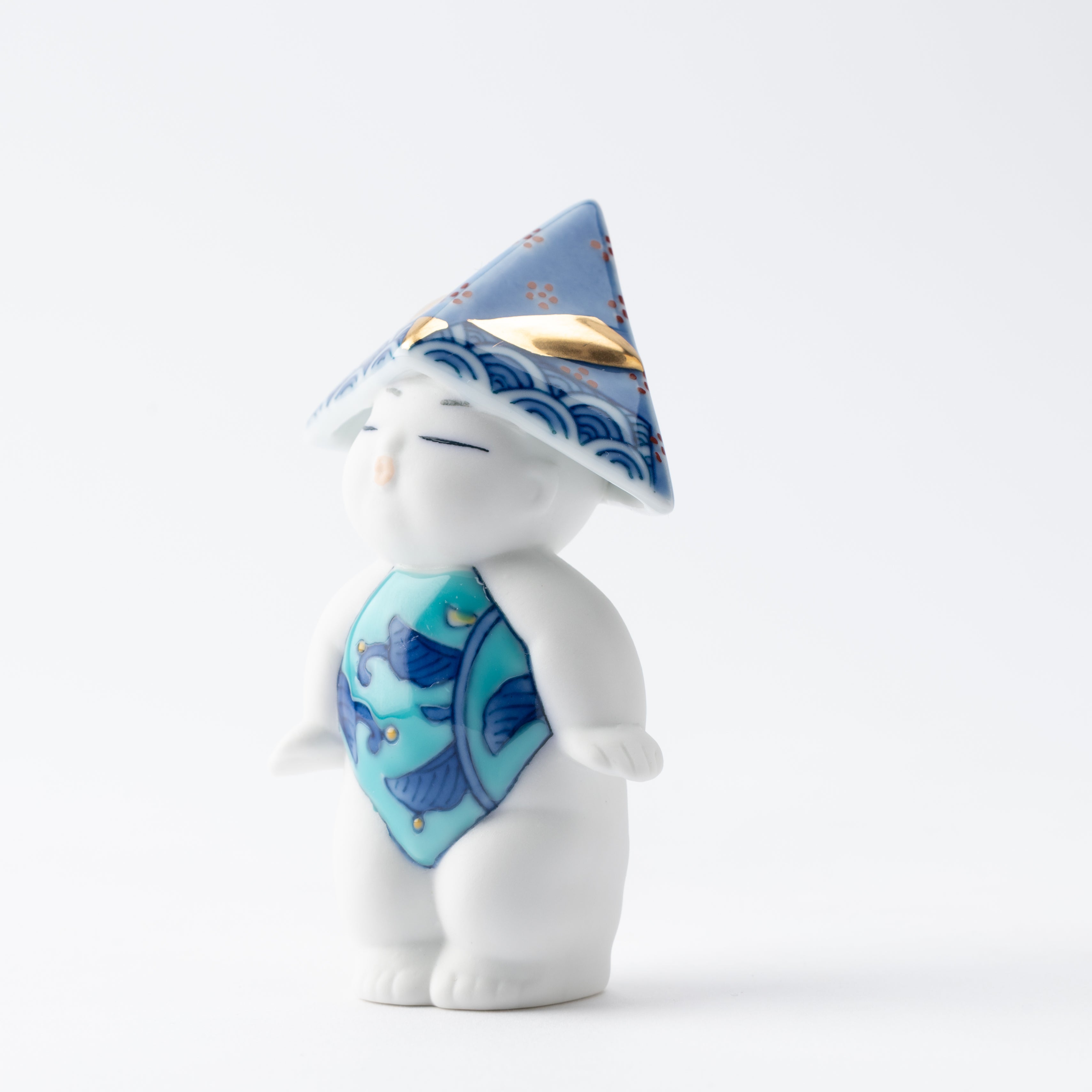
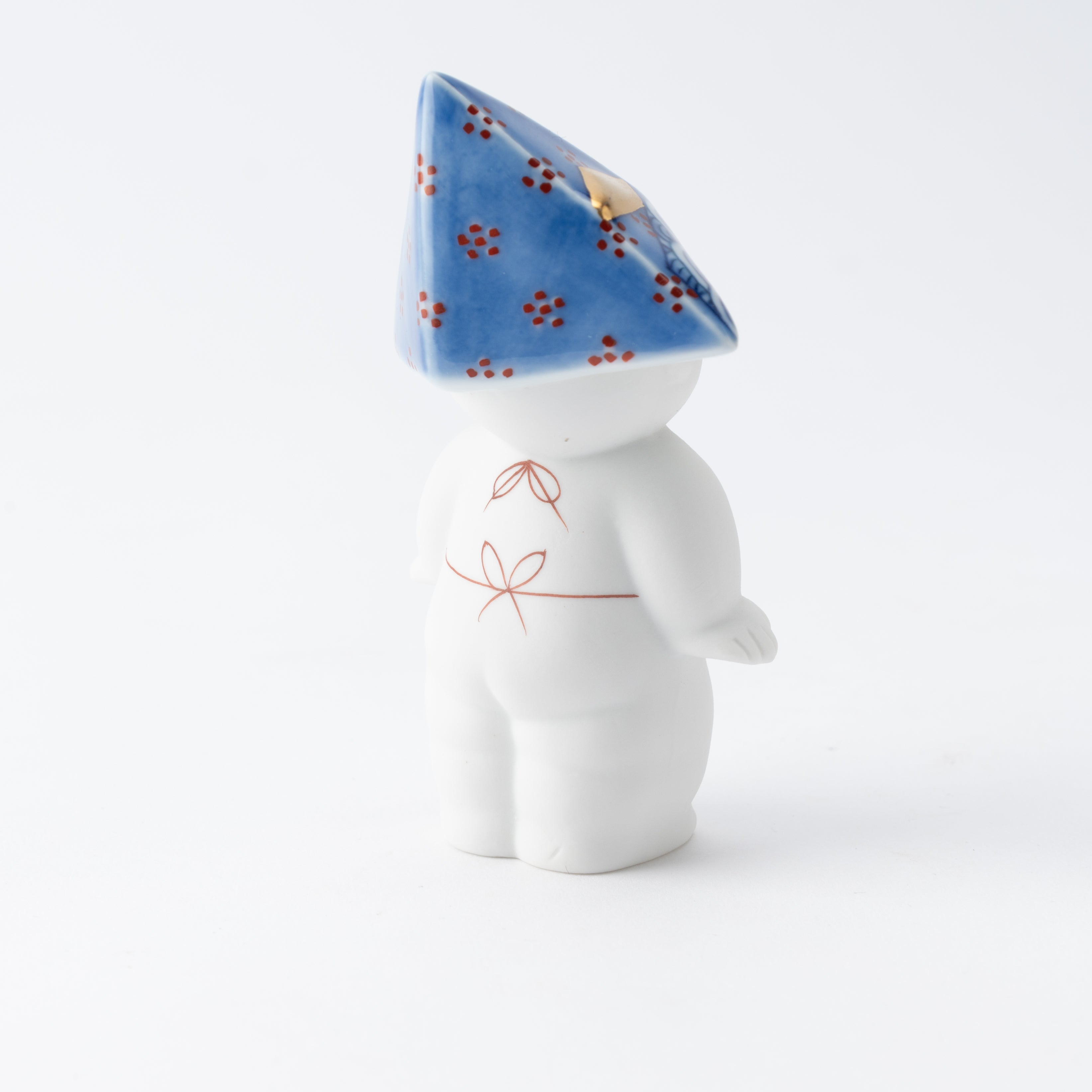
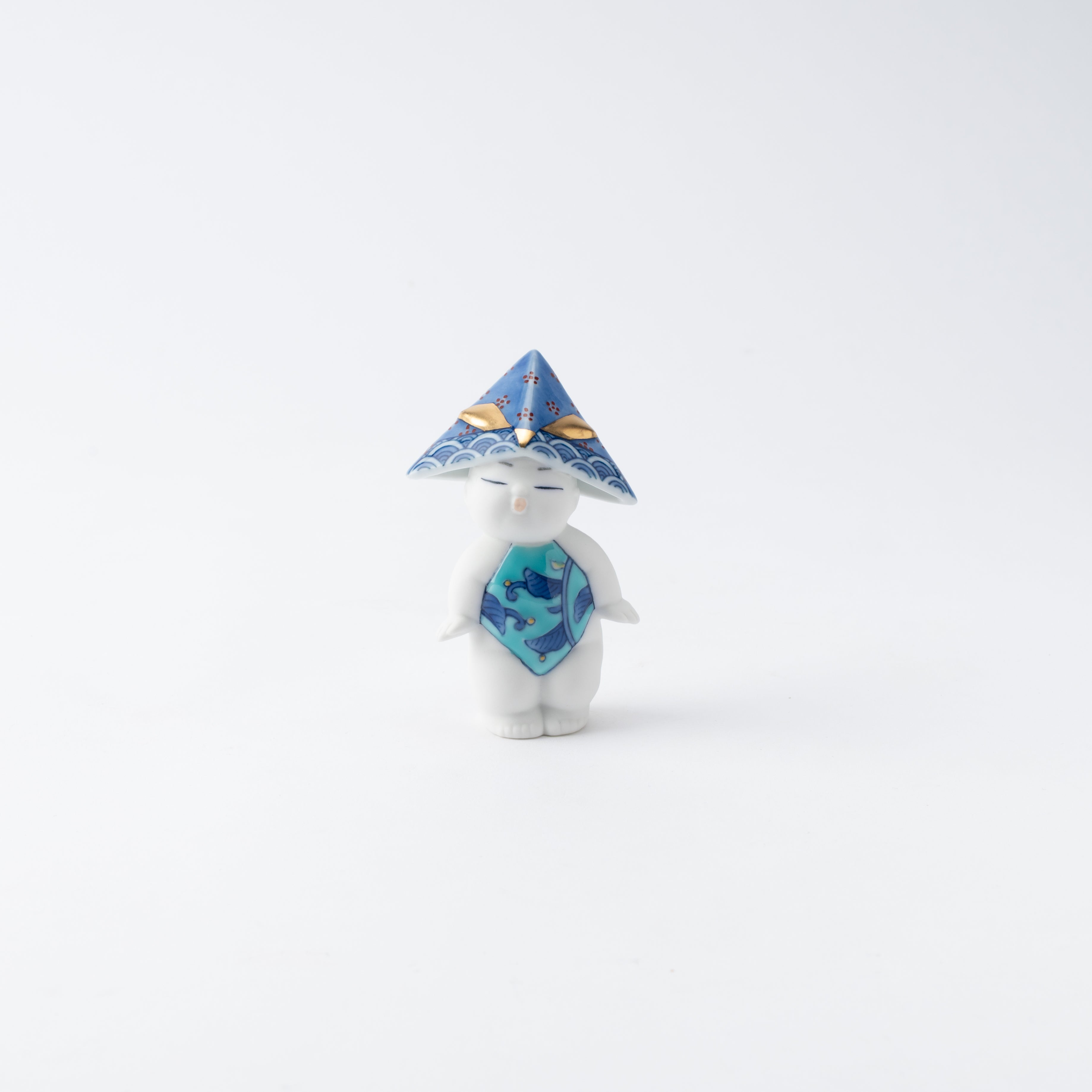
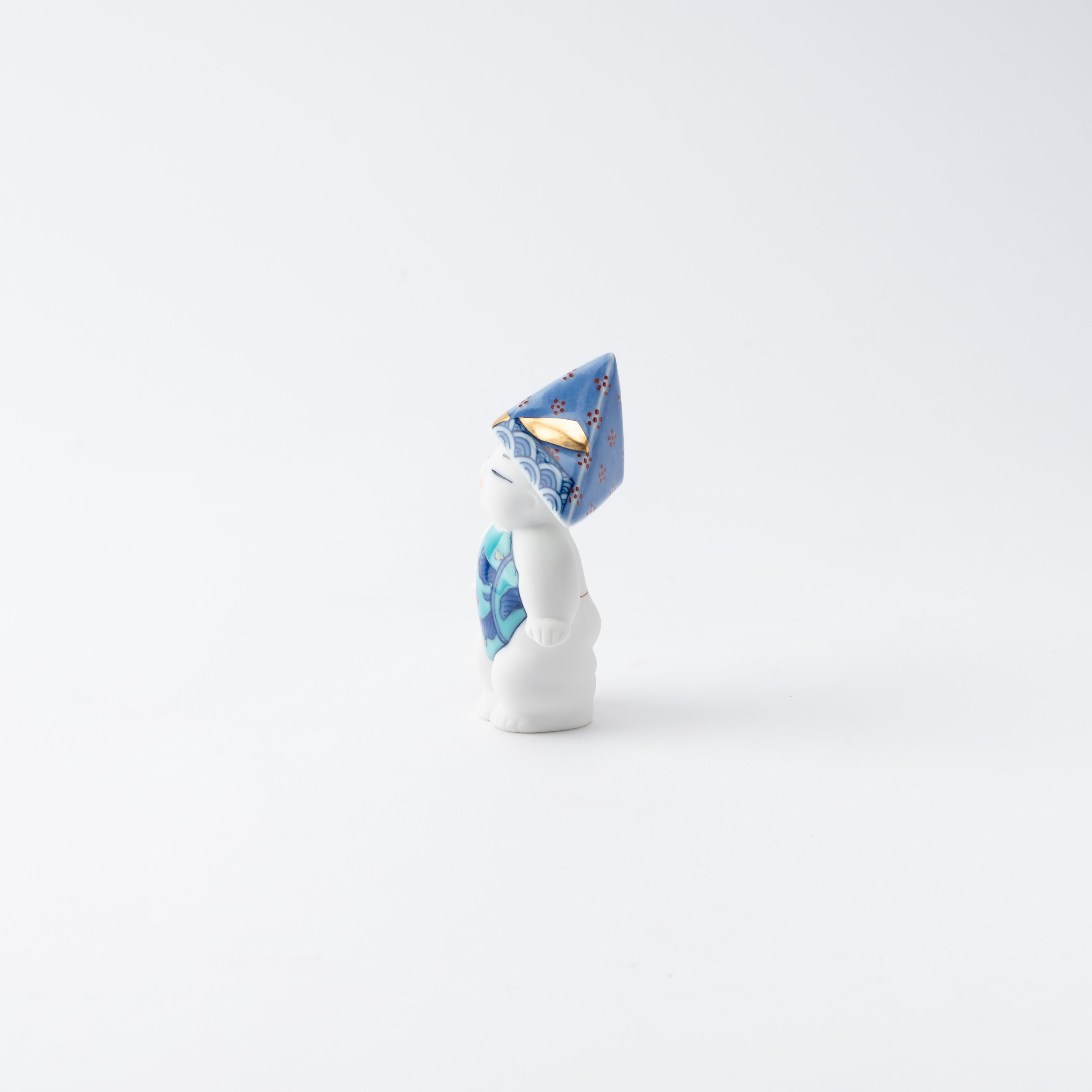
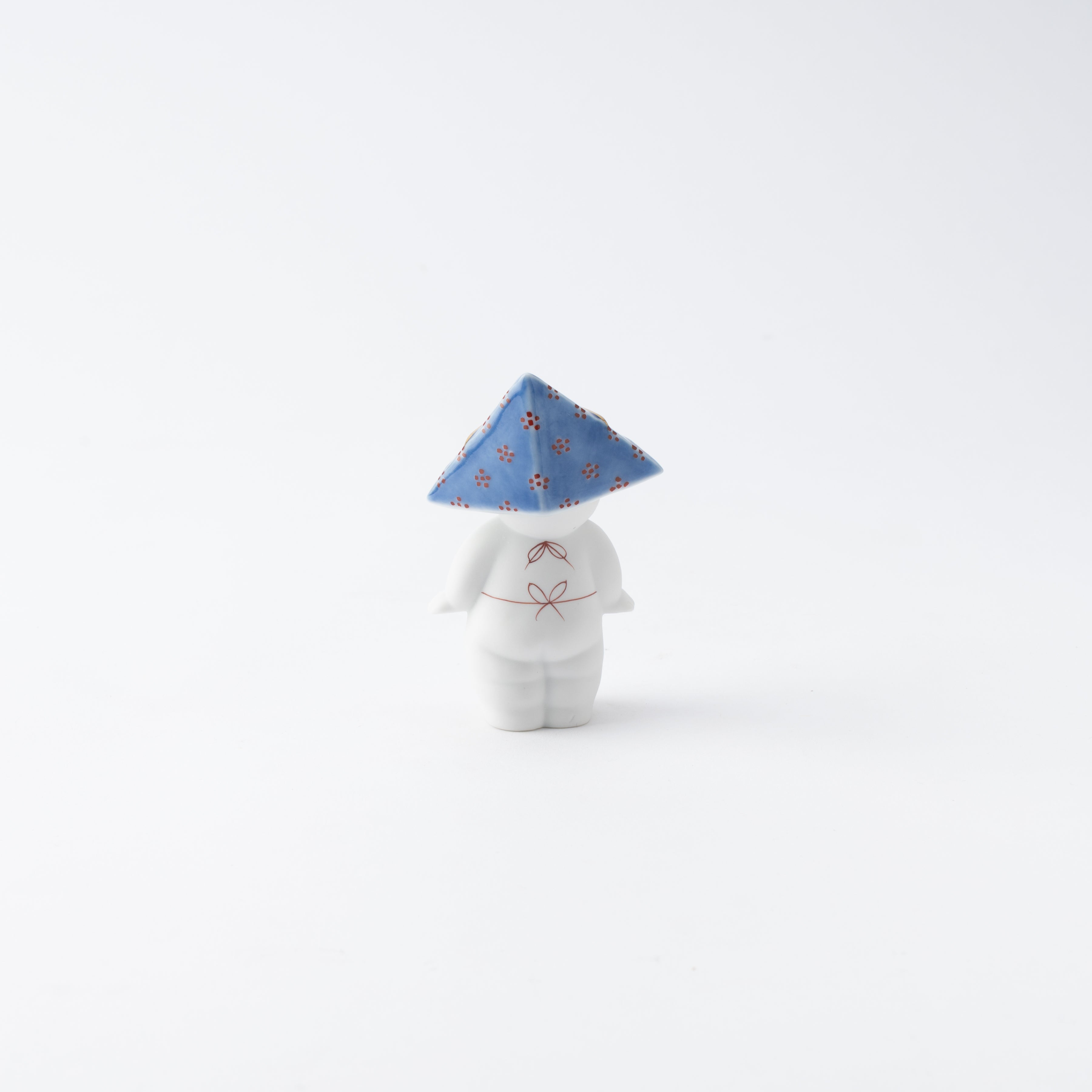
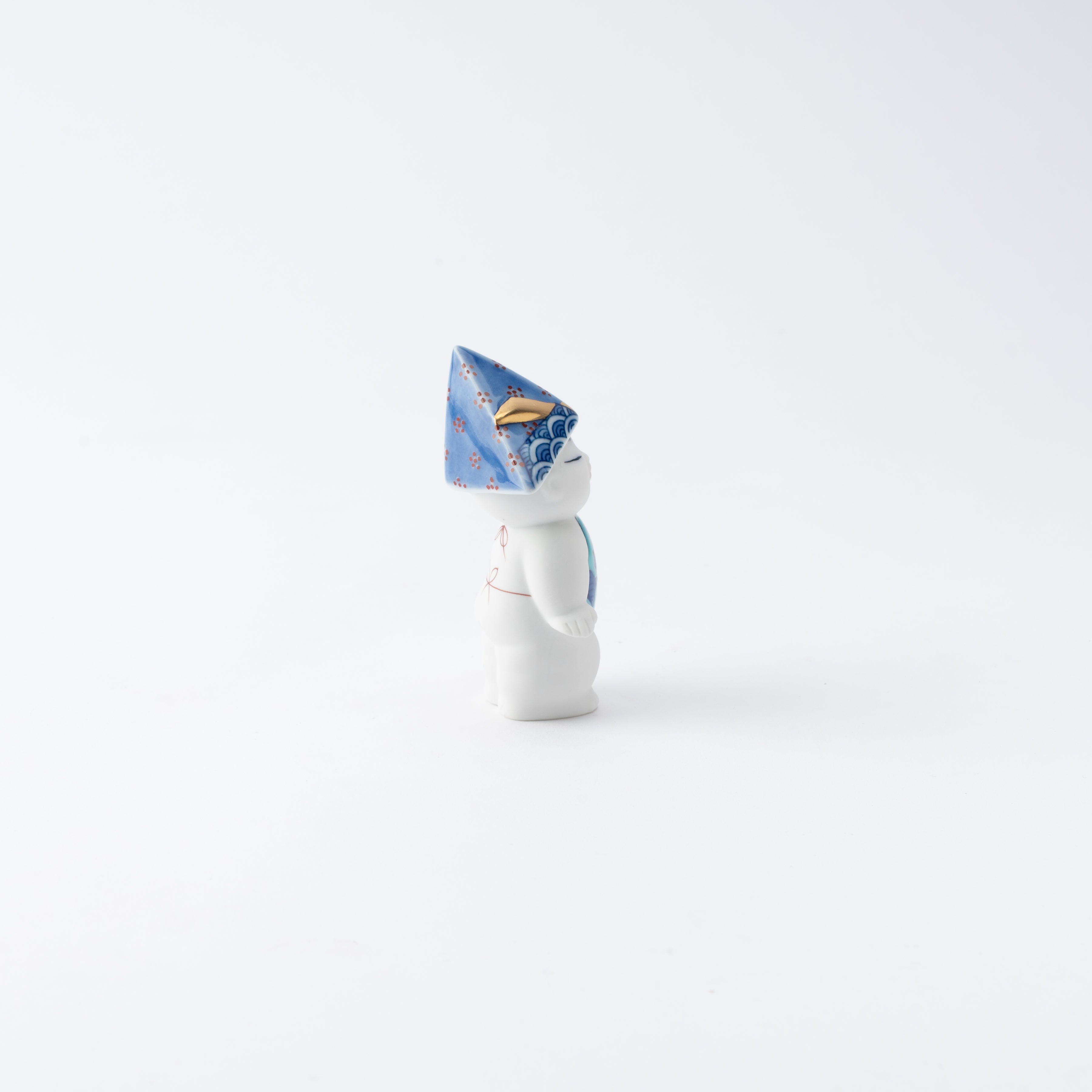

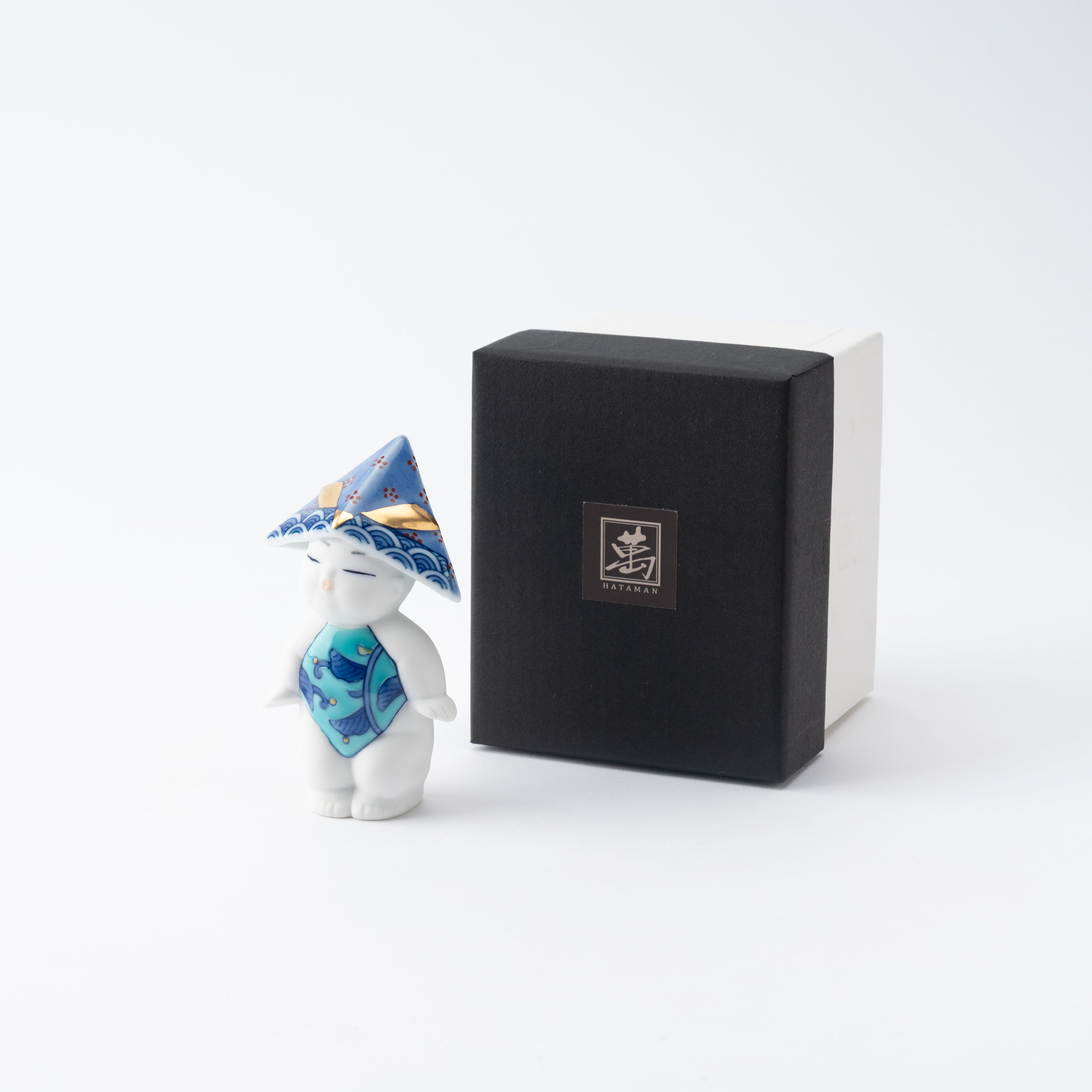
Kleine stehende Gosho-Puppe für Jungenfestival
Estimated Shipping Widget will be displayed here!
Diese entzückende Puppe ist nach dem Bild eines gosho Puppe, die ein Puppentyp war, der von den Hofadligen des alten Kyoto bevorzugt wurde. Diese Puppen zeichnen sich durch ihre großen, runden Köpfe und pummeligen kleinen Körper aus, die spiegeln die Ästhetik wider, die während der Edo-Zeit geschätzt wurde (1603–1868 n. Chr.).
Die stehende Puppe posiert mit süß ausgestreckten Armen und leicht geneigtem Kopf. Sein durchscheinende weiße Haut wird wunderschön mit unglasiertem Porzellan geschaffen und verleiht ihm einen Hauch von Realismus.
Der blaue Kriegerhelm der Puppe ist mit Pflaumenblüten verziert und seigaiha Wellenmuster symbolisieren Glück. Der heitere und unschuldige Ausdruck der Puppe und alle anderen Verzierungen werden von erfahrenen Handwerkern in Hataman Touens Atelier handbemalt. Seine grüne Schürze und die ordentlich gebundene Schleife tragen zusätzlich zur Niedlichkeit dieser kleinen Puppe bei.
Ursprünglich war es am Tango-no-Sekku (auch als Jungentag bekannt), einem der fünf Jahreszeitenfeste im alten China, üblich, Dekorationen und Opfergaben auszustellen, um böse Geister zu vertreiben und gute Gesundheit zu wünschen. Und In der Folge werden nun in den Häusern Puppen mit Kriegerhelmen oder einfach nur mit den Helmen ausgestellt, um den Kindern eine gesunde Entwicklung zu wünschen.
EINZELHEITEN
| Quantity | 1 |
| Size | L 4.5 cm (1.8 in) x W 5.5 cm (2.2 in) x H 9 cm (3.5 in) |
| Material | Porcelain |
| Package Type | Paper box |
| Microwave | No |
| Dishwasher | No |
Hersteller / Marke
Hataman Touen greift die reiche Geschichte und die Techniken der Imari-Nabeshima-Keramik auf, eine 370-jährige Tradition, und verkörpert gleichzeitig den Geist der japanischen Kultur, der Herz und Seele bereichert. Das Unternehmen möchte japanische Ästhetik in einem modernen Kontext verkörpern und seine Geschichte und Produkte mit der Welt teilen.

Kunsthandwerk
Nabeshima-Ware ist eine Porzellanart, die im sorgfältig verwalteten Brennofen der Nabeshima-Domäne hergestellt wird. Dieser Brennofen, ein staatliches Projekt unter der direkten Aufsicht der Saga-Nabeshima-Domäne, erlebte seine Blütezeit in der frühen Edo-Zeit (1603–1868 n. Chr.).
Etwa 250 Jahre lang war Nabeshima-Ware ausschließlich Shogunen und Feudalherren vorbehalten. In den Brennöfen wurden exquisite Stücke in Stilen wie Iro-Nabeshima (Überglasur-Emaille), Ai-Nabeshima (Sometsuke) und Nabeshima seiji (Seladon). Nach dem Ende des Feudalsystems wurden die Brennöfen privatisiert, neue Töpfer wurden aufgenommen und es entstand das, was heute als Imari-Nabeshima-Ware bekannt ist.

Optionen auswählen

















Estimated Shipping Widget will be displayed here!
Japanische Puppen & Dekoration
Erleben Sie den zeitlosen Charme japanischer Puppen und Figuren, Symbole des kulturellen Erbes und der Kunstfertigkeit, die seit Generationen geschätzt werden. Unsere kuratierte Sammlung japanischer Puppen besticht durch exquisite handgemalte Details, elegante Silhouetten und die geschichtsträchtigen Traditionen, die ihre Entstehung inspirieren.
Jede Figur verwandelt jeden Raum in eine Ecke raffinierter Schönheit und lädt zu einer tieferen Wertschätzung der Handwerkskunst und Geschichte ein, die diese japanischen Puppenschätze so bezaubernd machen. Ob Sie ein erfahrener Sammler sind oder diese kulturellen Ikonen zum ersten Mal entdecken, unsere Auswahl verspricht, Sie mit dem beständigen Geist und der Gelassenheit Japans zu verbinden.
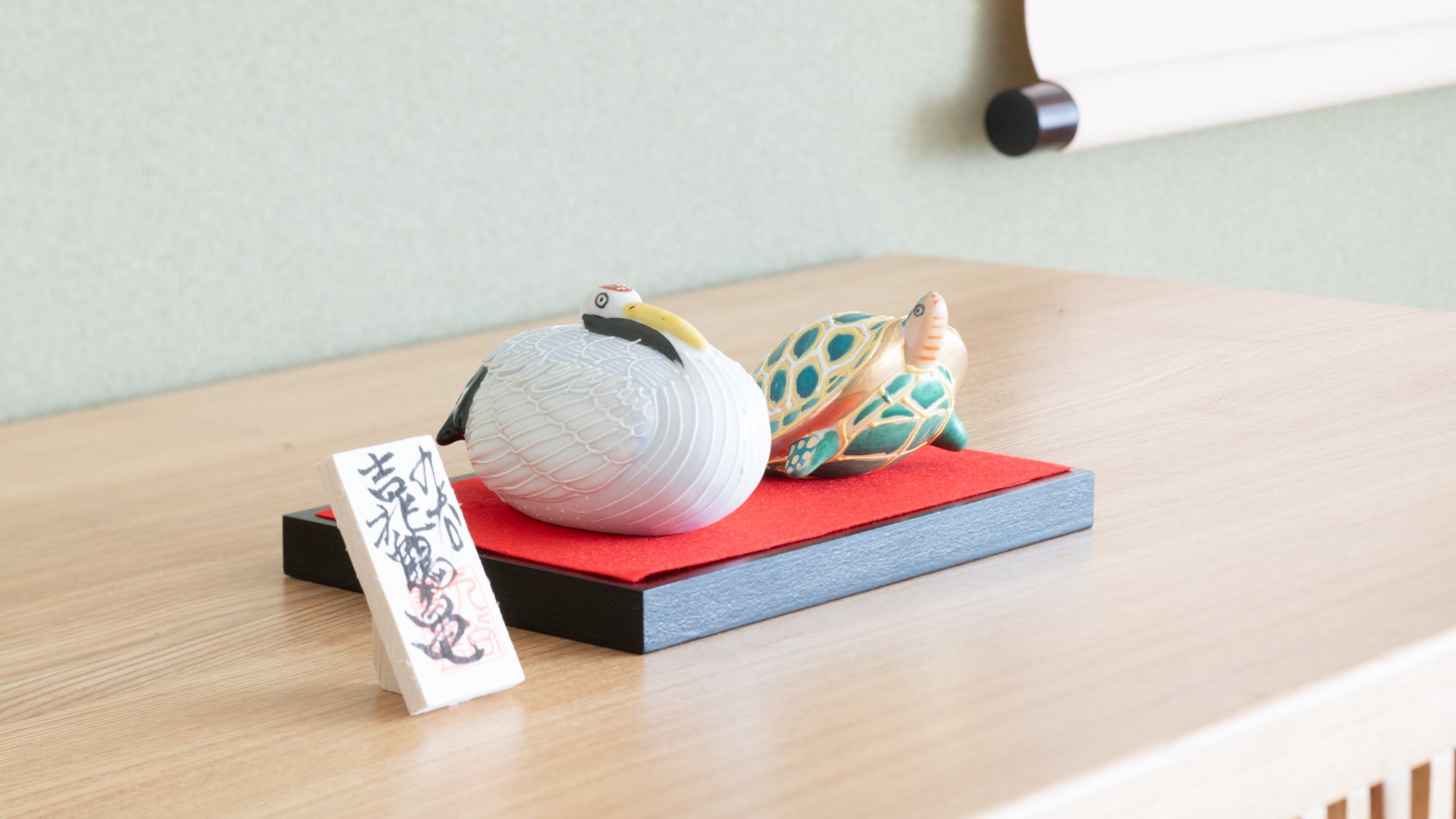
Maifestpuppen
Maifestpuppen sind Puppen, die zum Tango-no-Sekku, auch bekannt als Kindertag oder Jungentag, verwendet werden. Die Tradition entstand in der Nara-Zeit (710 n. Chr.–794 n. Chr.). In der Edo-Zeit (1603 n. Chr.–1868 n. Chr.) wurde der 5. Mai zum Feiertag und als Tango-no-Sekku eingeführt. Während dieser Zeit wurde das Fest unter der einfachen Bevölkerung von Edo weithin gefeiert und man begann, Puppen als Dekoration zu verwenden.
Die Platzierung dieser Puppen symbolisiert die gemeinsame Feier der Geburt eines Jungen in der Familie und verkörpert die Hoffnung, dass das Kind Krankheiten, Unfälle und anderes Unglück vermeiden und stark und gesund aufwachsen möge. Rüstungen und Helme werden als Talismane zum Schutz des Körpers ausgestellt und drücken Wünsche für Sicherheit, Gesundheit und ein kräftiges Wachstum aus.
